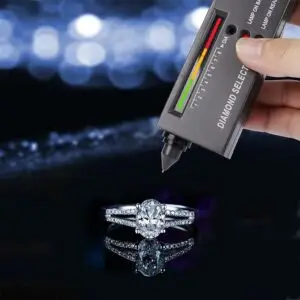Plating – The Advantages of Rhodium Plating
Plating is a process in which a metal coating is applied to a surface to improve its appearance, protect it from corrosion, or enhance its properties. There are different types of plating, including electroplating, electroless plating, and vapor deposition. Electroplating is the most common method of plating, which involves the use of an electric current to deposit a thin layer of metal onto the surface of a substrate.
Rhodium plating is a type of electroplating that involves the deposition of a thin layer of rhodium onto the surface of a metal object, usually made of silver, gold, or white gold. Rhodium is a precious metal that is highly resistant to corrosion, scratches, and tarnish. It is also very hard and has a bright white color, which makes it an ideal material for plating jewelry and other decorative items.
The advantages of rhodium plating include:
- Durability: Rhodium is highly resistant to corrosion and wear, making it an ideal material for plating items that will be used frequently, such as rings and watches.
- Brightness: Rhodium has a bright, white color that gives items a shiny and reflective appearance. This can enhance the overall appearance of jewelry and make it more attractive to customers.
- Tarnish resistance: Rhodium is highly resistant to tarnishing, which can occur when metals react with air or moisture. This means that items that are rhodium plated will maintain their appearance for longer periods of time.
- Hypoallergenic: Rhodium is hypoallergenic, which means that it is unlikely to cause an allergic reaction in people with sensitive skin. This makes it an ideal material for plating items such as earrings and necklaces.
Overall, rhodium plating with a thickness of 0.5-1.0 micron, is a popular choice for enhancing the appearance and durability of jewelry and other decorative items. It provides a range of benefits, including corrosion resistance, brightness, tarnish resistance, and hypoallergenic properties. As the price of Rhodium is very high (~$7000/oz; ~$225/gram in may 2023), the use of rhodium plating is implemented mostly on expensive items.
How is rhodium plating used in jewelry?
Below are some of the ways that rhodium plating is used in jewelry to enhance appearance and durability:
- White gold: Many white gold jewelry items are rhodium plated to give them a bright, white finish. This is because natural white gold has a slightly yellowish tint, which can be corrected with rhodium plating.
- Silver: Rhodium plating is also used on silver jewelry to prevent tarnishing and to give it a bright, white finish.
- Platinum: Although platinum is a naturally white metal, it can become scratched and lose its shine over time. Rhodium plating can be used to restore the original shine and durability of platinum jewelry.
- Enhancing gemstones: Rhodium plating can also be used to enhance the appearance of gemstones. For example, if a diamond has a yellow tint, rhodium plating can be used to make it appear whiter and more brilliant.
Overall, rhodium plating is a versatile and popular method of enhancing the appearance and durability of various types of jewelry, from white gold engagement rings to silver earrings.



